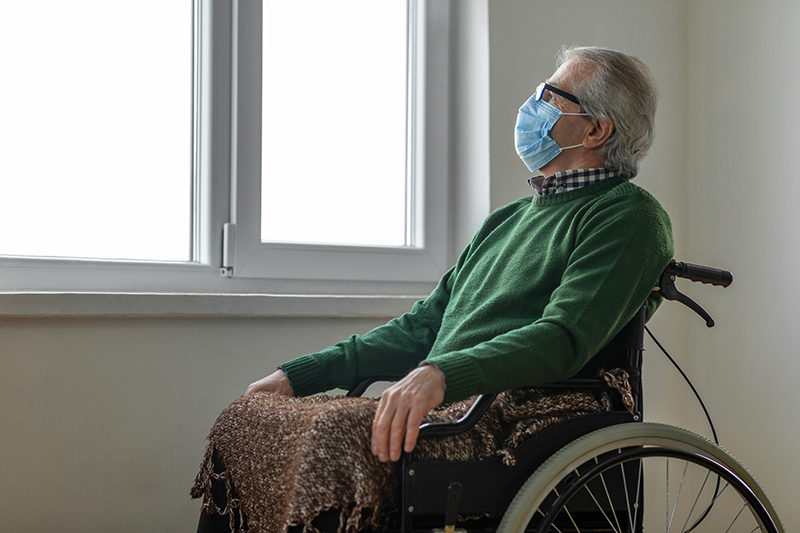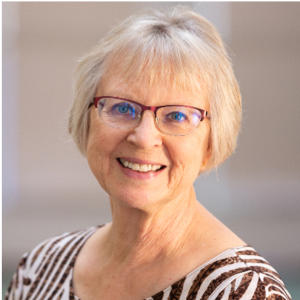
“It’s terrible here. Please pray for us!” These were the last heartbreaking words I heard by telephone from my beloved 97 year old Aunt. She had fallen at home and was placed in a nursing facility to recover from her injuries---right as the COVID-19 pandemic hit New Jersey with full force. She died of COVID-19, alone, frightened and without the comforting presence of her children and grandchildren.
The COVID-19 pandemic has affected nursing home residents more than any other group in the United States with over 132,703 deaths reported as of June 2021.1 The pandemic calamity uncovered many deficiencies in our health care system---particularly in the sector caring for our most vulnerable elderly. Gaps in the system are glaring. The supply chain for essentials such as face masks and rapid testing kits was almost non-existent. Since COVID-19 infected persons can show little to no symptoms at first, lack of essential supplies for direct care may have caused nursing staff to unknowingly spread the infection in care facilities.2 Low levels of nursing home staff due to poor pay and benefits and harsh working conditions were a “given” in this industry before the pandemic and became even worse after.
Nursing home care in the United States is poorly funded. Although a huge sector of the nursing home industry is for-profit, government programs such as Medicaid often foot the bill for nursing home care, paying very low rates.3 One business strategy is to run larger facilities with as many patients as state law allows so the facility is cheaper to run.
Ageism is a factor as well, adding to the burden of our elders. A study of media headlines during the pandemic in three countries, the United States, the United Kingdom and Australia noted a disturbing trend of “news chatter,” saying that older people have outlived their usefulness, are a drag on society, and ruinous to the economy. Why, elders are using up resources at the expense of future generations!4
Public policy has proven to be sorely lacking in the arena of long term care, but there are solutions. First, we must improve the pay, benefits and working conditions for nurse aides and other long-term care workers.3 While acute care hospital staff were applauded for being heroes during viral surges, nursing homes were often demonized for their lack of ability to handle the onslaught of very sick patients. Improving the supply chain for personal protective equipment and rapid virus testing could prevent nursing home patients from being completely isolated from their loved ones during another outbreak. It would also help to reduce the punishing nature of nursing home inspections, especially for low resource facilities that care for underserved populations.3 Inspections should be a mechanism to help a facility improve the care quality and well-being of its residents, not a fine-generating “gotcha.” Imposing hefty fines only leaves less money to hire staff and make needed improvements. Large health care systems, if partnered with nursing home facilities, can offer aid and assistance to nursing homes in the form of providing care coordination between facilities, teaching infection control to nursing home staff and even forming “strike teams” of physicians and advanced practice nurses that can support nursing home staff in the early stages of a pandemic.5 Furthermore, it is necessary to re-think how nursing home patients are housed. Facilities need to be smaller with more private rooms so that when distancing is necessary, it can be more easily accomplished.2
Finally, we must eliminate ageism.4 Our frail elders are survivors who deserve our respect. They’ve raised families, worked hard and contributed to their communities. Our youth need to be educated about the contributions of elders with more purposeful interaction between older adults and youth. Schools can be instrumental in promoting these connections. Mahatma Gandhi once said, “The true measure of any society can be found in how it treats its most vulnerable members.” Our elders must never again be abandoned and isolated when troubles befall our nation. We can and must do better.
Author Bio:

Ellen D’Errico, PhD, RN, NEA-BC
Dr. D’Errico is the program director for the PhD in nursing program at Loma Linda University School of Nursing. She has been an active member and co-chair of the research committee for the Association of California Nurse Leaders, a 10-year board member of the San Bernardino County Gangs and Drugs Taskforce, and past president of the Gamma Alpha Chapter of Sigma Theta Tau International, the nursing honor society. Her research interests include cancer survivorship and health care workforce issues.
References:
- Data.CMS.gov, Retrieved June 17, 2021 https://data.cms.gov/stories/s/COVID-19-Nursing-Home-Data/bkwz-xpvg/
- Kosar, C.M. & Rahman, M. (2021). Early acceleration of Covid-19 in areas with larger nursing homes and certificate of need laws, Journal of General Internal Medicine, 36(4): 990-907.
- Konetza, T.R. (2021). Improving the fate of nursing homes during the Covid-19 pandemic: the need for policy, American Journal of Public Health, 11(4): 632-634.
- Lichtenstein, B. (2021). From “coffin dodger” to “boomer remover”: outbreaks of ageism in three countries with divergent approaches to coronavirus control, Journals of Gerontology: Social Sciences, 76(4): 206-212.
- Wang, et al (2020). Time to leverage health system collaborations: supporting nursing facilities through the Covid-19 Pandemic, JAGS, 68:1129-1130.
